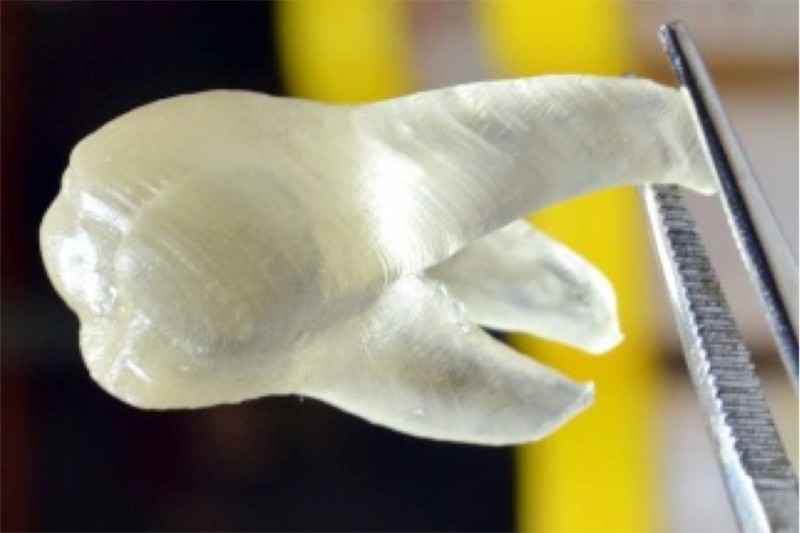Dentists Prepare to Battle Bacteria with 3D Printing

This 3D printed dental prosthetic could help fight bacteria. Courtesy of J. Yue, P. Zhao, J. Y. Gerasimov et al.
Latest News
October 23, 2015
It’s getting harder and harder to find an industry that hasn’t at least investigated incorporating additive manufacturing (AM) into its business. The usual suspects for AM include aerospace, automotive and medical, but that’s really just the tip of the iceberg. Dentists are another example of how 3D printing can transform an industry.
It won’t be long before the days of dental molds made by biting down on gunk are replaced by digital dentistry that relies on 3D imaging and 3D printing. Dentists have already begun to use AM to build new teeth for their patients. Now, a new technology that uses 3D printing could improve the lifespan of dental implants by fighting the bacteria that attacks teeth.
 This 3D printed dental prosthetic could help fight bacteria. Courtesy of J. Yue, P. Zhao, J. Y. Gerasimov et al.
This 3D printed dental prosthetic could help fight bacteria. Courtesy of J. Yue, P. Zhao, J. Y. Gerasimov et al.Researchers at the University of Groningen in the Netherlands have developed a process involving AM that aids in the battle against prosthetic tooth decay. Rather than printing with standard dental materials, the researchers have created an antimicrobial plastic containing embedded quaternary ammonium salts. The salts are positively charged, causing negatively charged bacterial membranes to explode upon coming in contact with the prosthetic tooth.
This research opens up new possibilities for combining AM and dental work, and could be an important next step for 3D printing in the dental field. From the paper, “3D-Printable Antimicrobial Composite Resins:”
3D printing is seen as a game-changing manufacturing process in many domains, including general medicine and dentistry, but the integration of more complex functions into 3D-printed materials remains lacking. Here, it is expanded on the repertoire of 3D-printable materials to include antimicrobial polymer resins, which are essential for development of medical devices due to the high incidence of biomaterial-associated infections.
Testing has revealed the new material kills 99% of Streptococcus mutans, the bacteria responsible for tooth decay. Standard materials only account for a 1% kill rate. The difference could result in big savings for patients, who, according to the study, spend millions on replacing damaged prosthetics every year.
Below you’ll find a video that demonstrates digital dentistry.
Sources: New Scientist, Advanced Functional Materials
Subscribe to our FREE magazine, FREE email newsletters or both!
Latest News
About the Author
John NewmanJohn Newman is a Digital Engineering contributor who focuses on 3D printing. Contact him via [email protected] and read his posts on Rapid Ready Technology.
Follow DE





